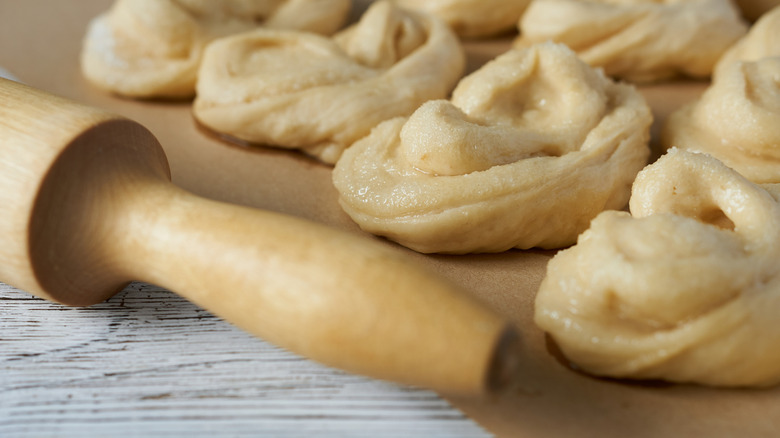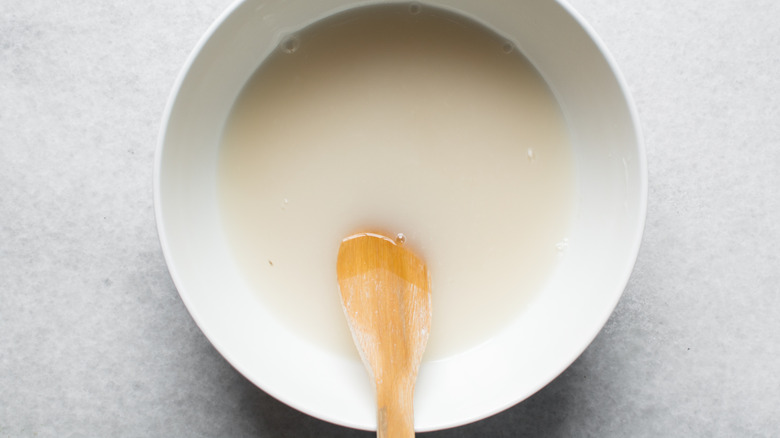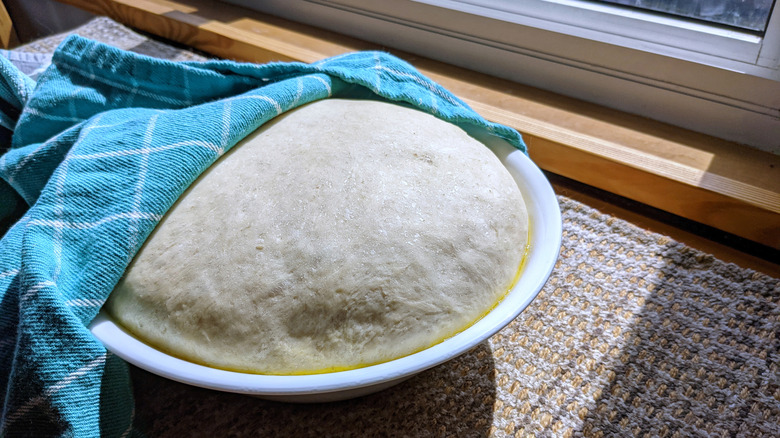How To Tell If Your Yeast Is Still Active
Humble yeast is one of those ingredients that you forget about until you're halfway through making incredible challah bread and you realize you're all out. This tiny-but-mighty organism is the backbone of the bread-baking process and many other recipes that rely on fermentation. But sometimes you pull out a packet of yeast to find it expired; can you still use it?
The good news is expired yeast isn't unsafe to eat. But, if you're about to start baking, it's important to have active yeast or it's unlikely to give your dough the rise it needs. Without active yeast, your baked goods can be left disappointingly dense and flat. Thankfully, you can test your yeast before baking to confirm if it's still alive.
When yeast is fresh and active, it produces carbon dioxide; this makes dough rise and gives baked goods their characteristic light and airy texture. Over time, yeast becomes less and less active, especially if it hasn't been stored properly. But, even with careful storage, yeast eventually loses its potency. You only need only a few basic ingredients to test how active yeast is: warm water, sugar, and the yeast itself. This process is sometimes called "proofing" the yeast, and it only takes a bit of patience.
Proof yeast with warm water
Begin by heating up about half a cup of warm water, aiming for a temperature of around 100 degrees Fahrenheit. It's important that you use a thermometer to ensure that the water is the proper temperature, because yeast is very sensitive to heat – water hotter than 120 degrees Fahrenheit can kill it. Using water that's too cool, on the other hand, may not activate the yeast at all. Next, dissolve 1 teaspoon of sugar into the water to provide the yeast with some "food," then add a packet of yeast (or a bit more than 2 teaspoons for bulk yeast). Stir the mixture gently to combine.
After mixing, let the yeast sit undisturbed for about 10 minutes. While you wait, you can check out our beginner's guide to baking with yeast to get even more tips. After some time, active yeast foams and bubbles to form a frothy layer on the surface. This means that it's producing carbon dioxide and is ready to be used. However, if 10 minutes pass and there's no sign of any bubbling, the yeast has likely gone bad. If your yeast is active but your bakes still aren't going well, you may be doing this kneading mistake that stops bread from rising.
What to do if your yeast expires
If your yeast fails the test and doesn't foam, it's time to replace it. Unfortunately, there's no way to revive expired yeast, so it's best to toss it out. Make sure to store your new, unopened yeast in a cool, dry place (unless you're using fresh yeast, in which case store it in the fridge). Once you open the yeast, whether you have some left in an individual packet or a bulk jar, it's best to transfer it to an airtight container and store it in the refrigerator. There, active dry and instant yeasts last up to four months, while fresh yeast lasts for two weeks.
If you're caught without active yeast in the middle of a recipe, there are a few alternatives you can employ. For example, the chemical reaction of lemon juice and baking soda can provide some lift in certain recipes and you don't have to proof the dough for as long, though the final taste and texture is slightly different. When using this method, the amount of lemon juice and baking soda you use should be equal to the amount of yeast you're replacing; if you're substituting 2 teaspoons of yeast, add 1 teaspoon of lemon juice and 1 teaspoon of baking soda instead.


